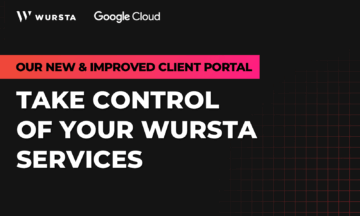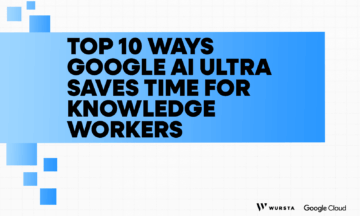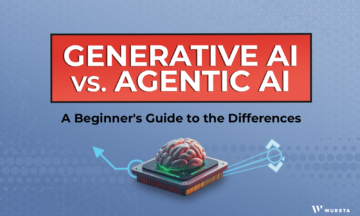MCP Explained: What Is It and Why Are We Suddenly Talking About It?

Often described as a universal translator for AI tools – and even as the HTTP of the agentic era – the Model Context Protocol (MCP) is quickly becoming one of the most talked-about developments in AI infrastructure.
Introduced by Anthropic in late 2024, MCP is an open standard, open-source framework that makes it easier for AI systems to connect with external tools, files, and databases. Its goal is simple: to help intelligent agents share context, take action across systems, and stay coordinated.
So how does it work, and why is it suddenly showing up everywhere? Let’s take a closer look.
What Is Model Context Protocol (MCP)?
At a technical level, MCP is a standardized framework that defines how large language models (LLMs) and AI agents interact with external data sources and tools – without requiring a separate integration for each use case. It includes specifications for executing functions, accessing structured databases, attaching contextual metadata, and enabling cross-platform interoperability.
Think of it as a universal communication layer between AI models, tools, and agents. At its core, MCP has three main components:
- The Protocol defines how clients and servers communicate, using standardized formats like JSON (JavaScript Object Notation) to describe actions, responses, and errors.
- MCP Servers act as adapters that expose specific tools or services, whether local (like your computer file system) or remote (like a cloud API). They translate AI requests into real-world actions the tools can understand.
- MCP Clients live inside the AI assistant or app. They send requests to the appropriate server, handle the response, and pass results to the AI agent.
With MCP, developers can build AI systems that don’t just process isolated inputs but operate within real workflows. Instead of building a custom connector for every data source and tool, teams can simply plug into an MCP server and let the protocol handle the back-and-forth. This approach also enables AI agents to work seamlessly across legacy systems and information silos.
The result is a standardized way for AI systems to request data, take actions, and stay aware of the broader context they’re operating in.
As the industry shifts toward agentic AI and model-integrated workflows, MCP has become a critical layer for coordinating these complex systems.
How MCP Fits into the Agentic AI Era
Agentic AI is often described as a new paradigm where AI systems are proactive rather than reactive. Agents don’t simply wait for a prompt to tell them exactly what to do. They reason through problems, plan multiple steps ahead, and collaborate with other agents to complete tasks.
To achieve this level of sophistication, today’s AI agents need access to much more than just raw data. They need shared understanding. As chatbots begin to resemble full-fledged operating systems and agents start chaining tools and services together, MCP becomes the glue that holds this new environment together.
For instance, AI agents need to:
- Know who they’re talking to;
- Share information in a structured way;
- Understand what tools are available and how/when to access and use them;
- Remember context across time and interactions.
As we’ve covered, these are exactly the challenges that MCP is designed to solve. It provides the framework for agents to exchange task-specific metadata, manage complex workflows, link various tools, and retain memory across steps – without all being hardcoded to work together.
The protocol also enables real-time collaboration across services. From enterprise assistants pulling live data to coding agents operating across GitHub, MCP manages that coordination behind the scenes and makes interoperability possible.
To put MCP in context, it’s helpful to compare it with something more narrowly focused, like RAG
RAG vs. MCP: What’s the Difference?
MCP has some similarities to Retrieval-Augmented Generation (RAG) – a method where a model retrieves accurate, up-to-date, and contextually relevant information from a database or document store before generating a response.
Basically, RAG works like a query system. In enterprise settings, it’s often used to pull in internal, proprietary, and/or domain-specific content in real time that the model wouldn’t otherwise know.
MCP, by contrast, operates on a broader level. A well-structured agentic AI system might use RAG as one step within a multi-tool agent workflow, but MCP is what orchestrates which agent runs what step, how tools are used, and how context is maintained throughout the process.
For instance, one agent might dispatch another to run a RAG query and generate a report, while a third agent updates records in a CRM system, and a fourth sends out a status summary via email. MCP acts as the coordination layer, managing all of these steps together.
In short, if RAG helps an AI system answer a question, MCP helps it do something useful with the answer.
Why MCP Matters
MCP adoption is accelerating across different domains as AI moves from isolated tools to embedded, task-aware systems. Increasingly, agents are expected to reason through multi-step problems, delegate subtasks, and synchronize actions across a patchwork of tools and data sources.
This kind of advanced, chain-of-thought reasoning across distributed resources necessitates a framework like MCP – and it’s already being put to use across a wide range of applications, such as:
- Enterprise assistants – MCP lets agents securely access CRMs, knowledge bases, and internal business systems to retrieve up-to-the-minute data and automate tasks.
- Developer tools – It enables coding agents to interact with live project files, version control systems, and development environments.
- Research workflows – Agents can use MCP to perform semantic searches across academic libraries, extract PDF annotations, and produce literature reviews and summaries.
- Web development – MCP supports agents that respond to live website data, enabling real-time content updates and edits.
As AI-native apps gain prominence, we’re seeing how the industry is moving from a focus on building better models to building better products that leverage those models. MCP provides the infrastructure that connects AI applications to real-world systems and workflows.
Major players like Anthropic, OpenAI, Google DeepMind, and others have already adopted the protocol as a foundational layer for building AI-native workflows. If you’re hearing more about it lately, it’s because MCP is increasingly seen as essential infrastructure for the next generation of AI.
As Demis Hassabis, CEO of Google DeepMind, put it, the protocol is “rapidly becoming an open standard for the AI agentic era.”
Closing Thoughts
The emergence of MCP reflects the maturation of AI from isolated tools to interconnected systems. If AI agents are going to operate as autonomous users of the Internet, they’ll need a framework like MCP to keep systems integrated and context intact. Just as HTTP once enabled the modern web, this protocol is now laying the groundwork for a new generation of intelligent, agent-driven applications.
The shift toward agentic AI is accelerating, and MCP has rapidly established itself as a cornerstone of this transformation – making agentic AI systems scalable, adaptable, and ready to plug into real infrastructure.
The bottom line? The agentic future is already taking shape, and MCP makes it possible.



